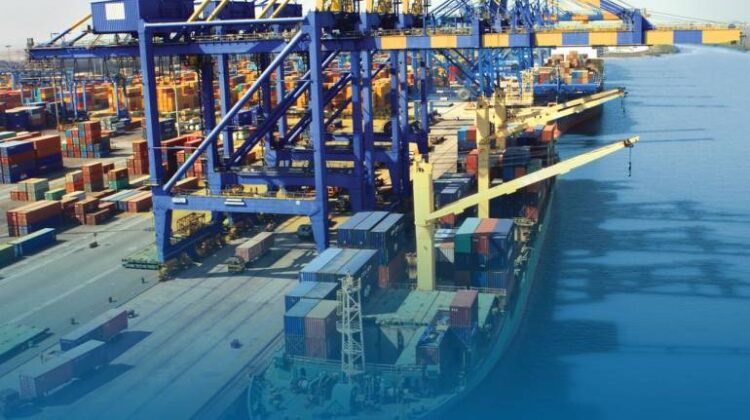
12 major ports of India observe 4.45 per cent cargo volume growth in FY24 through strengthened infrastructure
NEW DELHI : India’s Ports and Shipping sector has been on a remarkable upswing lately. Whether it’s the external trade, expanding ports’ capacity, or the 7,517 kilometers of coastline dotted with over 200 ports, the growth has been undeniable. And recently, the performance of the 12 major ports under the Union government’s ownership saw an uptick in cargo handling. In FY24, these ports collectively managed a staggering 819.227 million tonnes (mt) of cargo, marking a 4.45 percent increase from the previous year’s 784.305 mt. With India’s ports handling approximately 95% of the nation’s international trade volume, this surge in growth signals a new era of efficiency for the industry.
What 2024 has seen so far?
According to the Ministry of Ports, Shipping and Waterways, major ports collectively handled 12.310 million TEUs, up 8.06% from FY23’s 11.392 million TEUs. Jawaharlal Nehru Port Authority led the way by managing 6.43 million TEUs, over half of the total volume. Petroleum, oil, and lubricants (POL) cargo increased 5.06% to 245.990 mt from the previous year’s 234.137 mt. Iron ore shipments surged 32.68% to 61.031 mt, raw fertilizer shipments rose 13.56% to 9.406 mt, and coking coal and other coal movements increased 10.24% to 64.939 mt. Moreover, Paradip Port Authority led cargo handling among major ports, reaching 145.379 mt in FY24, up 7.40% from the previous year’s 135.362 mt.
Factors driving Industry’s growth
Maritime transport flourishes alongside global economic expansion and trade, as well as through national initiatives and developments. Pushpank Kaushik, CEO of Jassper Shipping, underscores the pivotal factors enhancing port capabilities and propelling industry growth:
Infrastructural Development – India’s infrastructural development significantly boosts port operations. Specialized terminals like ICTT in Cochin and LNG in Dahej Port optimize resources and enhance efficiency. The Sagarmala project aims at port-led development until 2035, streamlining cargo handling and transport for cost-effective logistics. Coastal states witness road connectivity projects along with 55 rail projects and 15 road projects enhancing port connectivity.
Technology Advancements – Indian ports, including the Kolkata Dock System (KDS), have seen significant improvements with the implementation of Radio Frequency Identification (RFID) based Port Access Control Systems (PACS). This technology enhances security and streamlines operations. The installation of AIS base stations and VHF radios has further boosted port efficiency. Additionally, upgraded systems like the ‘Port Community System’ (PCS), along with ‘Direct Port Delivery’ and ‘Direct Port Entry’, have simplified data flow and operational processes, making business easier at ports.
Policy Reforms – Private ports benefit from price flexibility, as the government permits non-major ports to set their own tariffs with State Maritime Boards’ input. Project UNNATI, launched by the Indian government, seeks to improve operations at key ports. The National Logistics Portal (Marine) links logistics stakeholders, boosting efficiency and transparency while cutting costs and delays through IT integration. This portal covers all transport modes, providing seamless end-to-end logistics services and streamlining port operations. Additionally, under the Sagarmala Programme, 166 projects are underway at major ports, with 90 completed, adding over 230 million tonnes per annum in port capacity.
Public Private Partnerships – India has around 200 non-major ports, which are increasingly handling a larger share of the country’s port traffic. In FY23, non-major ports contributed 45% to the total port traffic. As part of the Sagarmala Programme, 45 projects have been planned for these non-major ports. Out of these, 31 projects are being implemented through Public-Private Partnerships (PPP) with a total investment of Rs. 45,973 crores (US$ 5.54 billion).
Pushpank Kaushik further highlights, “The Maritime Industry’s growth is a testament to the groundwork laid by India’s infrastructure development, its ports, and the various initiatives facilitating smoother trade. This, in turn, translates into streamlined operations and a bolstered global trade landscape. The industry’s continuous expansion mirrors India’s strides in technological advancements and other efforts aimed at enhancing port efficiency, a pivotal aspect of international trade. As the industry flourishes, it underscores India’s commitment to fostering a conducive environment for trade and economic progress.”
Furthermore, India is set to invest $82 billion in port projects by 2035, aiming for a brighter future. Six new mega ports are in the pipeline under the National Perspective Plan for Sagarmala. Additionally, a project exceeding $96.48 million is underway to upgrade Syama Prasad Mookerjee Port, Kolkata, enhancing operational efficiency and global competitiveness through berth reconstruction and mechanization. The government’s focus is also on integrating solar and wind-based power systems across key ports, with a goal of surpassing 60% renewable energy consumption by 2030, divided into three phases.

